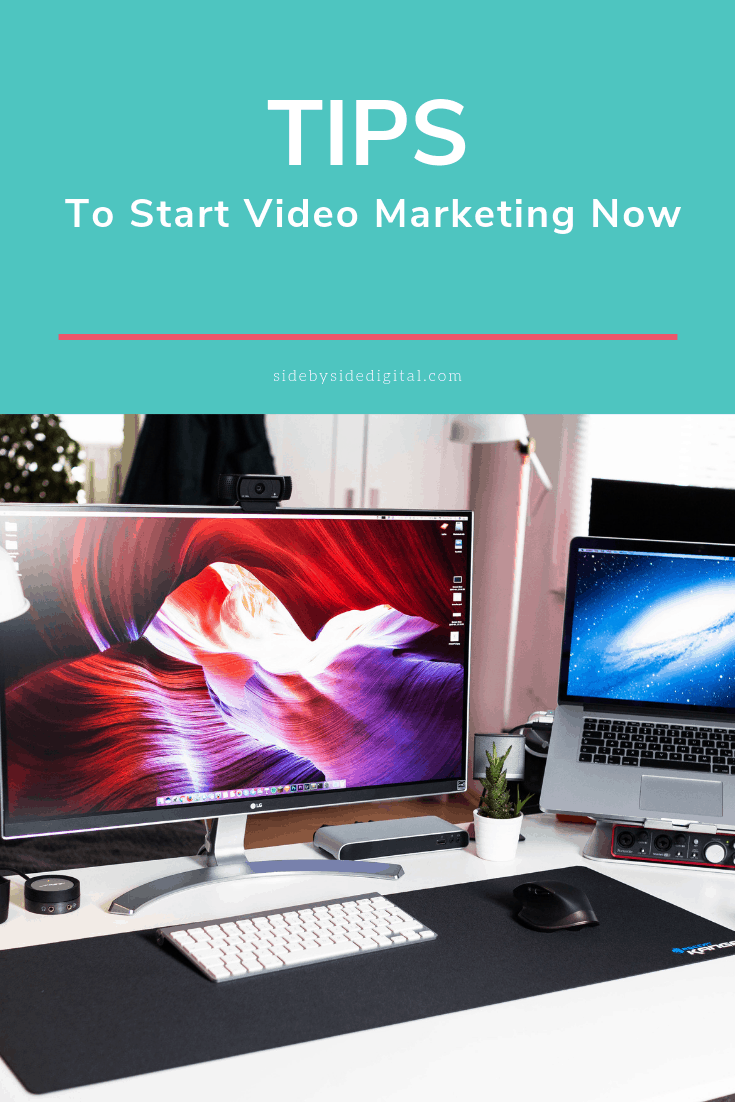1. You don’t have to invest tons of money
Let’s get the elephant in the room out of the way first. You don’t have to spend buckets of money to create video these days. Long gone are the times when you needed an elaborate studio or to hire a team.
There are a few different options when it comes to recording the footage. The least expensive is your cell phone. Android or iPhone, as long as it’s a smartphone you’ll be able to shoot a video that you can use in your marketing. Personally, I prefer using my DSLR as I have a nice tripod that I use and to be honest my cell phone is going on 3 years old and the lens is scratched to $hit (can you say ‘thank you kids’?!?).
If you do have the money to invest, hiring a videographer is a good place to start. A videographer can shoot and edit all of your footage and produce at least one short video for $500 – $1000. Though if you are producing one a week, this can add up quickly.
Of course quality is important, but so is authenticity. Your viewers will be more impressed by your smart, funny and helpful videos than whether the lighting is just right.
2. What Story Do You Want To Tell?
For most entrepreneurs, there is a plethora of topics for video marketing. Though like other forms of content marketing, you’ll want to have a firm grasp on your ideal customer and types of questions they want/need answered.
Then you’ll want to create videos for every step of the marketing funnel. Think about where along the funnel a video could supplement or replace existing content. Fun videos can bring pain points to life and humanize your brand. Product demo videos can quickly educate audiences and build trust in your offers.
3. Keep Them Short
Videos can be a tricky form of content marketing. For the most part, they’re popular, fun and shareable, but at the end of the day it’s your audience’s choice whether to watch it or not. And, even if the thumbnail is enticing enough for your customer to press play, keeping their attention is it’s own battle.
As you can see from this nifty chart care of Wistia, the sweet-spot for video length is around 5 mins. If your video does have to be over 7 mins, there isn’t any discernible different in engagement with videos between 7 and 13 mins long.
4. Don’t Forget The Call to Action
One of the biggest mistakes I see when it comes to video content is that businesses allow the video to completely fade to black at the end. Allowing this to happen is probably one of the worst things you can do. You’ve held the attention of your viewer just to let them sit there staring at a black screen.
The few seconds at the end of the video should be dedicated to adding contact information and a strong call to action. Make sure the call to action is getting them to do what you want. Do you want them to subscribe to your YouTube channel? Tell them and highlight your subscribe button. Do you want them to contact you? show your phone number or email address.
Remember: your video is just part of your sales funnel.
5. Have a Strategy
Where will your videos be hosted? Will they be useful on your website?
Most people use YouTube to host their videos. Assuming they are not private in nature, make sure they are public and therefore come up in YouTube search results. YouTube, does after all, have over a billion users, that’s a lot of eyeballs.
In addition to this, make sure to always embed your video on your own website. Take a comb through your existing posts to see if your newly created video could supplement your content. By including a video within your blog posts will increase the amount of time people spend on your website. Also, Google’s algorithms consider how many times a video is viewed, and embedded video views you receive get added to the ‘views’ tally on YouTube. This is important for showing up in Google search results!


